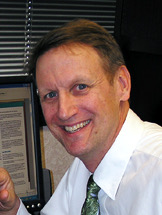In today’s highly competitive, constantly changing healthcare real estate environment, being a successful healthcare development firm takes plenty of persistence, perseverance, patience and attention to details, according to those involved in the business.
An example of a development firm showing all three qualities to get a project underway can be found in Bristol, Conn., where Jupiter, Fla.-based Rendina Healthcare Real Estate recently started construction on a future 62,000 square foot downtown medical office building (MOB) that it landed through an RFP process.
Because the project is a key element in the City of Bristol’s plan to revitalize and redevelop its downtown, Rendina spent plenty of time coordinating the project and the design with the city, which owns the land that Rendina will lease, the independent Bristol Hospital, whose Multi-Specialty Group will offer a wide array of services in the building, and others, including state transportation officials.
During a time when numerous health systems prefer to develop and own the outpatient facilities they occupy, Rendina’s persistence, perseverance, patience and attention to details have paid off, as the company will complete the project in late 2018.
As an extra bonus, Rendina will own the project instead of developing it on a fee basis.
Most healthcare development firms prefer to finance and own the projects they develop, as taking the risk can be more lucrative than completing facilities for a set fee.
According to Revista’s second annual second annual “Outpatient Healthcare Real Estate Development Survey,” of the 33.9 million square feet of outpatient projects started or completed in 2017, about 9.53 million, or 28 percent, are or will be owned by third-party development firms. That percentage is in keeping, albeit a bit lower, than the general rule of thumb that about one-third of all outpatient projects developed in a given year will be owned by third-party firms.
In the case of the Bristol Hospital MOB project, the provider chose to conserve its capital for other uses instead of spending it on the project. It’s a scenario that HRE professionals say could become more prevalent in the future, as health systems are experiencing dwindling reimbursements while still needing to invest their capital in expanding their service lines and delivery models.
“I’ve been here 11 almost 11 and a half years, and true access to capital to do something with has been really lucid for us,” Bristol Hospital President & CEO Kurt Barwis told The Bristol Press. “We are really fortunate to have found a developer to actually finance the project and work through the project with us.”
Steve Barry, executive VP and director of development and leasing with Rendina, says: “Overall, the city, the hospital and Rendina coordinated the details and worked very well together on a complicated project to get this shovel in the ground to meet the hospital’s timeline.”
Rendina was awarded the project in early 2017, meaning the planning process since then took just more than a year.
“This is not an uncommon timeline, especially when you have local and state approvals required for a project,” Mr. Barry says. “We also had an intense design process, getting input from a wide variety of user groups to make sure the space was going to be flexible and efficient in order to meet the hospital’s needs well into the future.”
When asked if developing healthcare projects requires more patience and attention to details than it does for other types of facilities, he notes: “Healthcare development is not a business you can just jump into and figure out quickly. It takes a lot of experience to navigate some of the nuances of developing these facilities and working successfully with health systems.”
The facility is slated to open in late 2019.
John Mugford is the Editor of Healthcare Real Estate Insights. For more information on HREI, please visit www.HREInsights.com.

